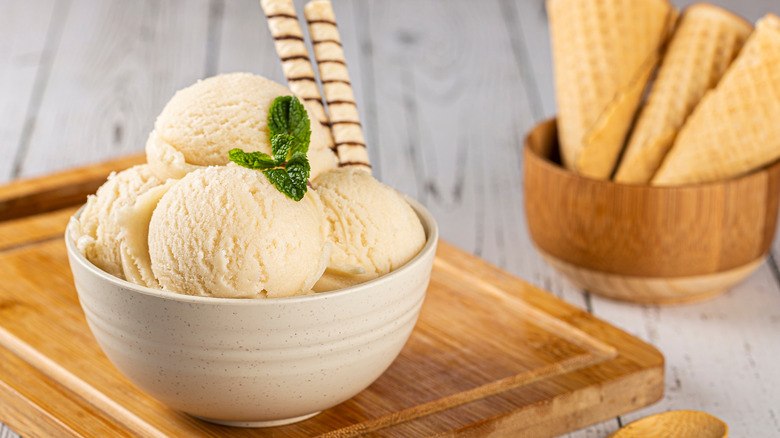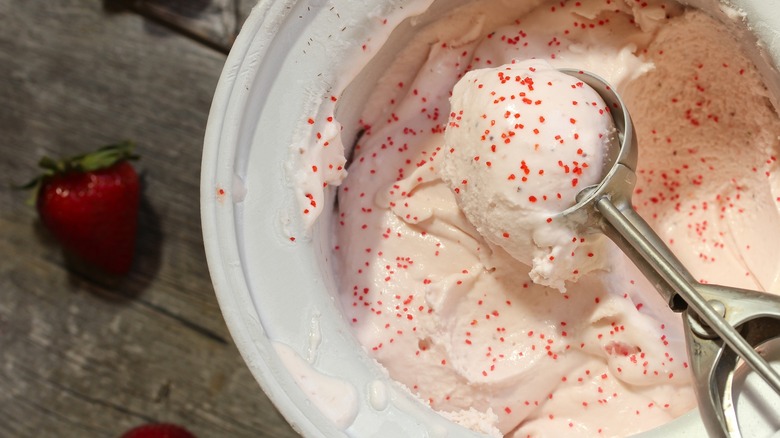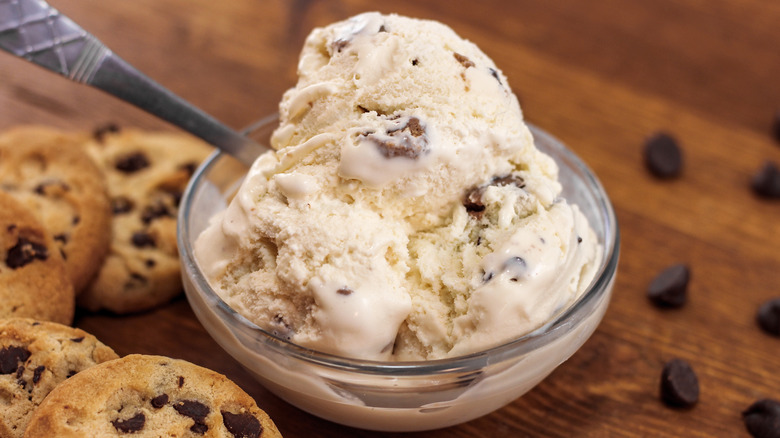The Actual Reason Refrozen Ice Cream Has A Different Texture
Whether you're nine, nineteen, or ninety-nine, it's hard to resist ice cream. Sweet, creamy, and silky smooth, this frozen food delights the pallet and turns even the hottest summer day into a heavenly experience. It doesn't matter if you buy it from a store or make ice cream at home; we all feel like kids again with the first spoonful.
Like many areas of the culinary arts, creating ice cream seems to deliver a product that is more than the sum of its parts. At the same time, ice cream can be an ephemeral dish. Served fresh, it's all you could ever dream it could be, but allow it to soften and refreeze, and the resulting product seems to change character completely. What was once soft and smooth becomes denser, heavier, and much harder to dip from the container.
Your ice cream changing form isn't some type of punishment for not finishing the carton in one seating. Nor is it some kind of evil magic. It's pure science.
How is ice cream made
To understand what changes when your ice cream melts and is then refrozen, we first need to grasp what is really happening when we make it. Undeniably Dairy gives a detailed look at the making of ice cream, starting with preparing the base of milk, cream, sweetener, and sometimes eggs. This mixture must be heated thoroughly to ensure it's safe to eat. Once the mixture has cooled, any desired flavorings are added, and then poured into an ice cream churn or machine.
Inside the ice cream maker, the base will be chilled and consistently stirred by a paddle called a dasher; its job is to churn the cream and add air to the mix. This added air causes the ice cream to increase in volume as it freezes.
As a paper by H. Douglas Goff via ScienceDirect explains, the air bubbles and ice crystals developed in ice cream during freezing are microscopic (20–50 microns). Their tiny size is what gives ice cream its velvety texture. Who knew?
Why refrozen ice cream is different
As we learn from the ScienceDirect article, the actual structure of ice cream is very complicated. As ice crystals form, they trap sugars and other carbs inside themselves. At the same time, the air bubbles become coated with fats which then attract proteins. All this occurs at a molecular level due to agitation and freezing.
The International Dairy Journal reports that as ice cream melts, its molecular structure begins to break down. The ice crystals dissolve, releasing their stored sugars. The air bubbles start to escape as the fats and proteins become thinner, and everything returns to a liquid state.
Placing ice cream back in the freezer after it has melted will cause it to refreeze, but it will never be the same again. Its loss of air bubbles means it will never have that light, fluffy texture it once had. Not being stirred will result in larger ice crystals forming and not trapping as many sugars.
The resulting ice cream will be firmer and harder to dig into. Depending on the ice cream recipe used, there may even be a marked change in taste and no one wants that. The bottom line is if you want to enjoy a smooth texture with optimal flavor, try to avoid refreezing melted ice cream.


